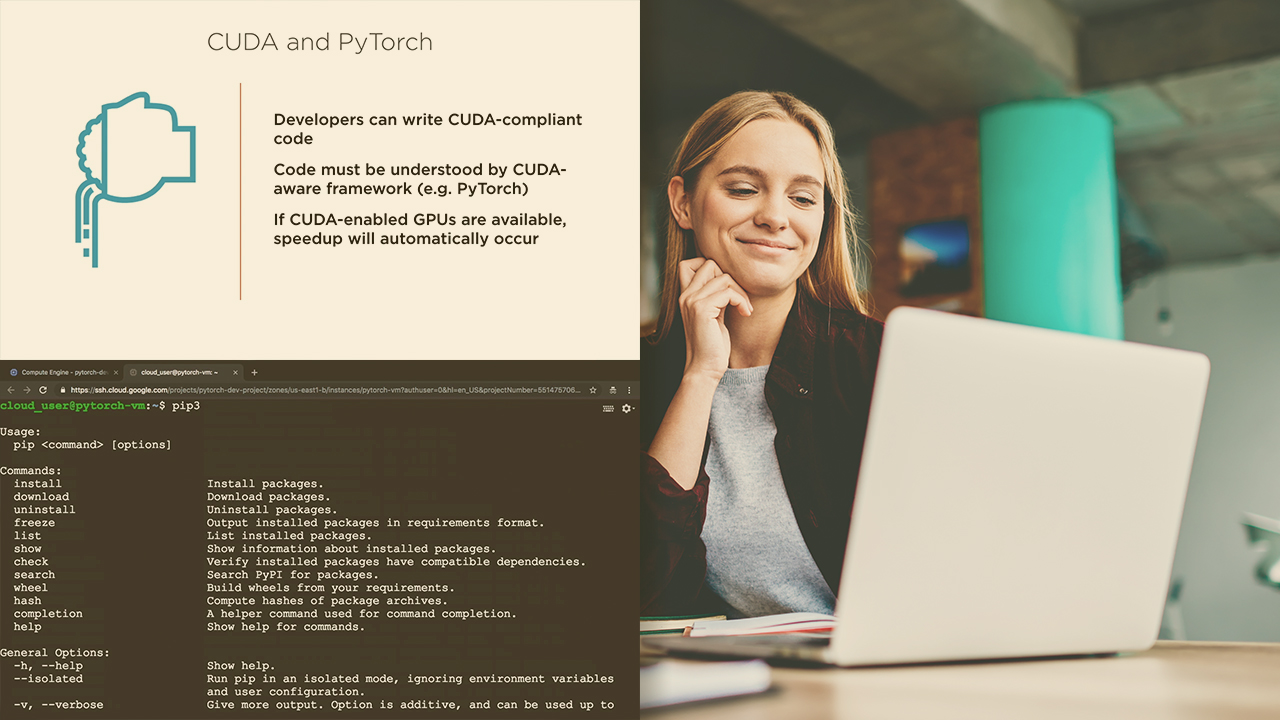Description
In this course, you will :
- Learn how to install PyTorch with pip and conda, as well as how to take advantage of GPU support.
- Learn how to hand-craft a linear regression model with a single neuron by defining your own loss function.
- how PyTorch optimizers can be used to make this process much smoother
- learn how to add different activation functions and dropout to PyTorch neural networks
- Investigate how to create classification models in PyTorch.
Syllabus :
1. Installing PyTorch on a Local Machine
- Prerequisites and Course Outline
- CUDA Support in PyTorch
- Exploring PyTorch Install Options on a Local Machine
- Setting up a Virtual Machine
- Installing PyTorch with CPU Support Using Conda
- Installing PyTorch with CPU Support Using Pip
- Adding GPU Support to the VM and Installing the CUDA Toolkit
- Installing PyTorch with GPU Support Using Conda
- Installing PyTorch with CUDA Support Using Pip
2. Understanding Linear Regression with a Single Neuron
- Linear Regression
- Finding the Best Fit Line
- Gradient Descent
- Training a Simple Neural Network with One Neuron
- Visualizing Regression Results and Compare with Regression Using scikit-learn
- Preventing Overfitting Using Regularization
- Performing Ridge Regression Using a Neural Network with One Neuron
3. Building a Regression Model Using PyTorch
- Training a Neural Network Forward and Backward Passes
- Optimizers
- Building a Neural Network Using PyTorch Layers
- Training a Neural Network Using Optimizers
- Dropout
- Epochs and Batches
- Exploring the Bike Sharing Dataset
- Using Datasets and Data Loaders in PyTorch
- Building and Train a Neural Network for Bike Sharing Demand Prediction
- Working with Different Neural Network Architectures
4. Building a Classification Model Using PyTorch
- Softmax and Cross Entropy
- Softmax and LogSoftmax
- Evaluating Classifiers
- Exploring the Graduate Admissions Dataset
- Preprocessing the Data
- Building a Custom Neural Network
- Training and Evaluating the Neural Network
- Customizing and Evaluating Different Models









